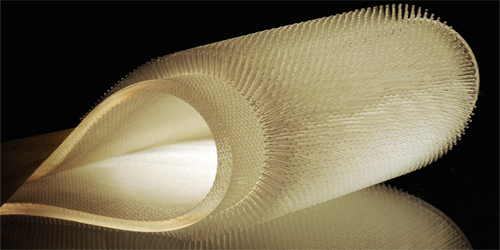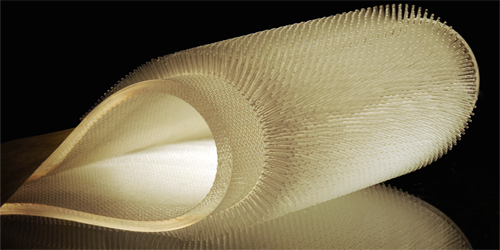How Hairy Tongues Help Bats Drink Nectar
The South American Pallas’s Long-Tongued Bat Glossophaga soricina feeds by dipping its tongue into nectar that pools at the bottom of flower blossoms. As the bat retracts its tongue, blood swells the short hairs that coat the tongue’s surface, causing them to stand upright. This process is thought to enhance the trapping of the fluid, increasing nectar uptake. To investigate how tongue hairs help animals drink, Anette Hosoi and colleagues at the Massachusetts Institute of Technology, Cambridge, have engineered and tested hairy tongues that mimic those of bats. The team calculated a tenfold increase in the uptake of fluid for hairy tongues compared to hair-free tongues, finding that a bat’s tongue is nearly perfectly optimized for this kind of drinking.
Hosoi and colleagues created models of hairy tongues using strips of rubber from which 2.7-millimeter-long rubbery hairs protruded. After submerging the rubber tongues into silicone oil, they slowly retracted them, monitoring how much fluid the tongue captured. They found that for high hair densities, the tongue emerged fully saturated with oil and that very little drainage occurred during retraction of the tongue. For low hair densities, the fluid only partially filled the space between the hairs and drained quickly. Modeling the hairy side of the tongue as a porous material, the team found that an optimal hair density exists for maximum fluid uptake. They also observed that hair densities of hairy-tongued bees, bats, and possums are close to optimal values, suggesting that these densities confer an evolutionary advantage to these species.
This research is published in Physical Review Fluids.
–Katherine Wright
Katherine Wright is a Contributing Editor for Physics.





